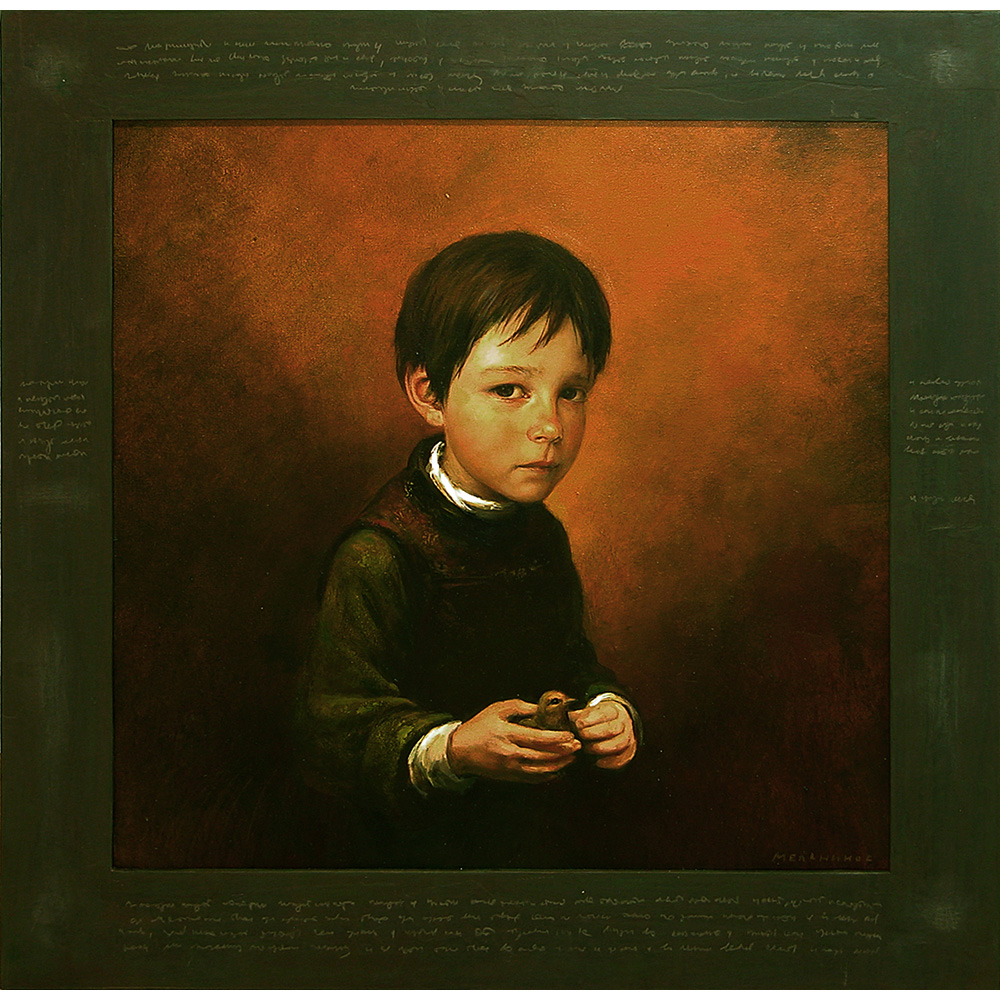Artwork Description
Igor Melnikov – Lost Chick
Dimensions: 24 x 24.5″ framed / 19 x 19.5″ unframed
Year: 2004
Medium: oil on canvas
In Lost Chick, Melnikov returns to a favorite theme: the innocence of children, embodied here in the tender relationship between boy and chick. The chick rests gingerly in the small boy’s cupped hands, communicating both the trust between man and animal and the gentleness of the child’s embrace. Viewers’ attention is focused entirely on the portrait subject and his feathered friend: the background’s masterful gradation of light creates a gentle halo effect around the boy, emphasizing his centrality through its formal characteristics.
Russian born artist, Igor Melnikov, upends traditional associations with portraiture through his haunting and intrinsically psychological paintings of emotionally ambiguous children and within his subtle natural explorations. Rather than focusing on the individual identity of those within his works, Melnikov instead looks to viewers as dynamic participants in the interpretation of his paintings, allowing them to determine whether the children might burst into tears or laughter, based on personal experience, thought, and upbringing. Melnikov is fascinated with the simultaneity of happiness and suffering, which he believes function as an expression of the ‘complexity of the human personality’ and exist as a component of the ‘meaning of being’. Melnikov’s paintings are collage-like, yet not in the traditional, material sense of the process—instead layering his own psychological explorations onto his attempted understandings of the human condition and expression. While his muted color palettes might at first appear to be reductive, they instead focus viewers’ attention on the figures within the work and encourage slow and thorough readings of the detailing that remains visually available. While people and the human condition remain the primary subjects within his paintings, Melnikov also expresses an artistic concern for the natural world, whether expressed in landscape surroundings or in its more material and familiar manifestations, seen in the figure’s clothing and simple possessions.
by Keira Seidenberg, Art History/Gender Studies student, McGill University

